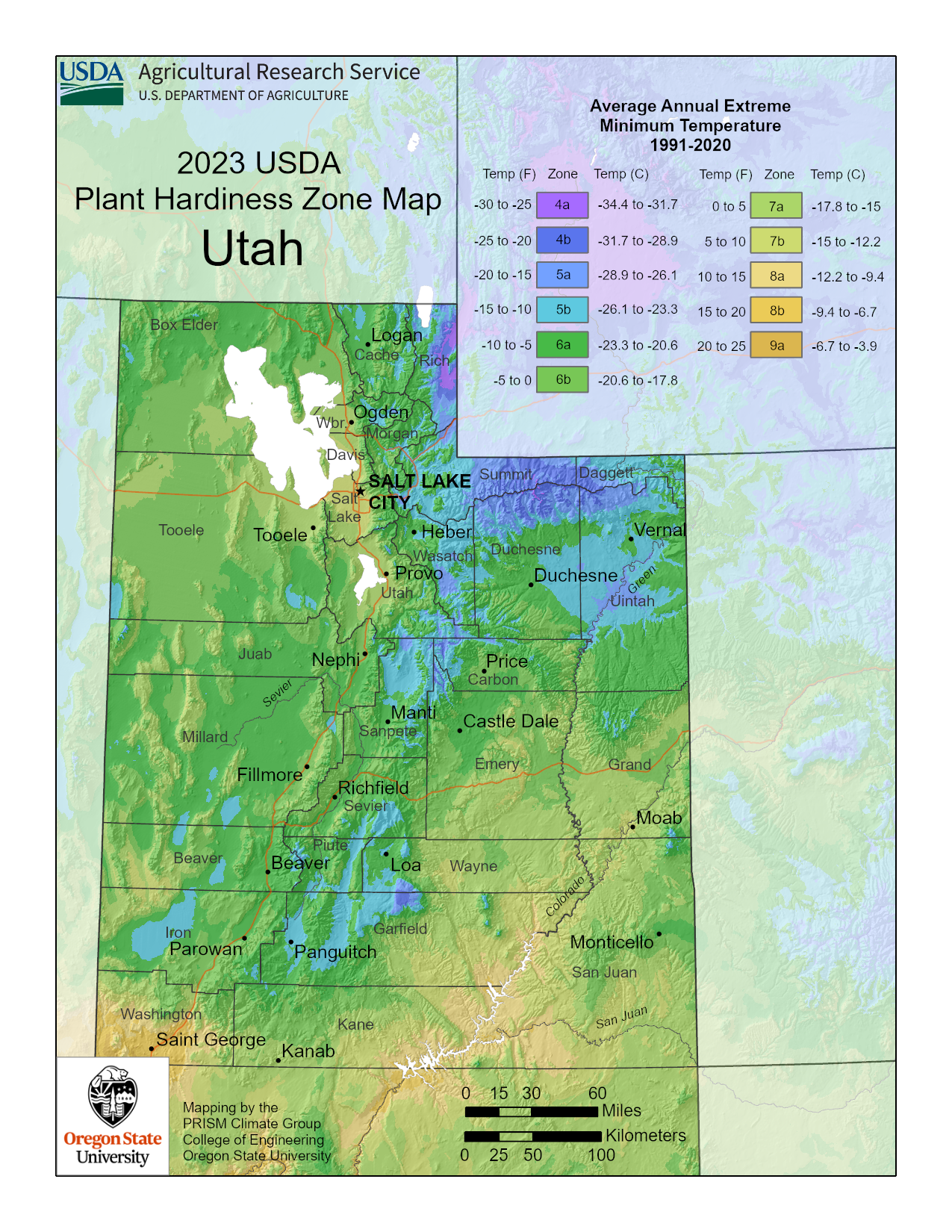Utah Planting Zones - USDA Map Of Utah Growing Zones

Click on the image above to see a larger version.
Utah USDA Plant Hardiness Map
Gardening in Utah is much easier when gardeners implement species of plants that are compatible with the plant hardiness zone in which they live. The map above is the latest version of the Utah plant map, which was released late in 2023.
Since 1960, the USDA has been gathering data and providing gardeners and plant enthusiasts all over the country with valuable information pertaining to plant hardiness. The most recent version of the map, based on thirty years of weather data, is more sophisticated than any prior version. Some of the country has seen a rise in their zones due to a winter warming trend that some people attribute to global warming.
Utah zones include a frosty 4a in the north to a balmy 9a in the southwest. Extreme winter temperatures range from -30 to 25 degrees F. (-34 to -4 C.). With this much variance in one state, gardeners do well to know which zone they live in. The map above can be enlarged by clicking it, which will help you determine your zone.
When you purchase flowers, shrubs, and trees according to the Utah planting map, you are not guaranteed that they will survive, as there are other factors that come into play. However, it is a great place to start when searching for new plants for your garden and landscape.
Gardening tips, videos, info and more delivered right to your inbox!
Sign up for the Gardening Know How newsletter today and receive a free copy of our e-book "How to Grow Delicious Tomatoes".
-
 Looking For Plants To Give You The Soft And Fuzzies? Try These 5 Fuzzy Leaf Plant Options
Looking For Plants To Give You The Soft And Fuzzies? Try These 5 Fuzzy Leaf Plant OptionsLovers of texture, drama, silver foliage and tactile plants will adore these special sensory garden additions. These fuzzy leaf plant options will leave you all aglow
By Susan Albert
-
 Get Ready For A Summer Of Hummers! Grow These Full Sun Hummingbird Plants and Flowers
Get Ready For A Summer Of Hummers! Grow These Full Sun Hummingbird Plants and FlowersIf you’re lucky enough to enjoy a sunny backyard, make sure you are maxing out on your pollinator opportunities and grow these full sun hummingbird plants and flowers
By Tonya Barnett